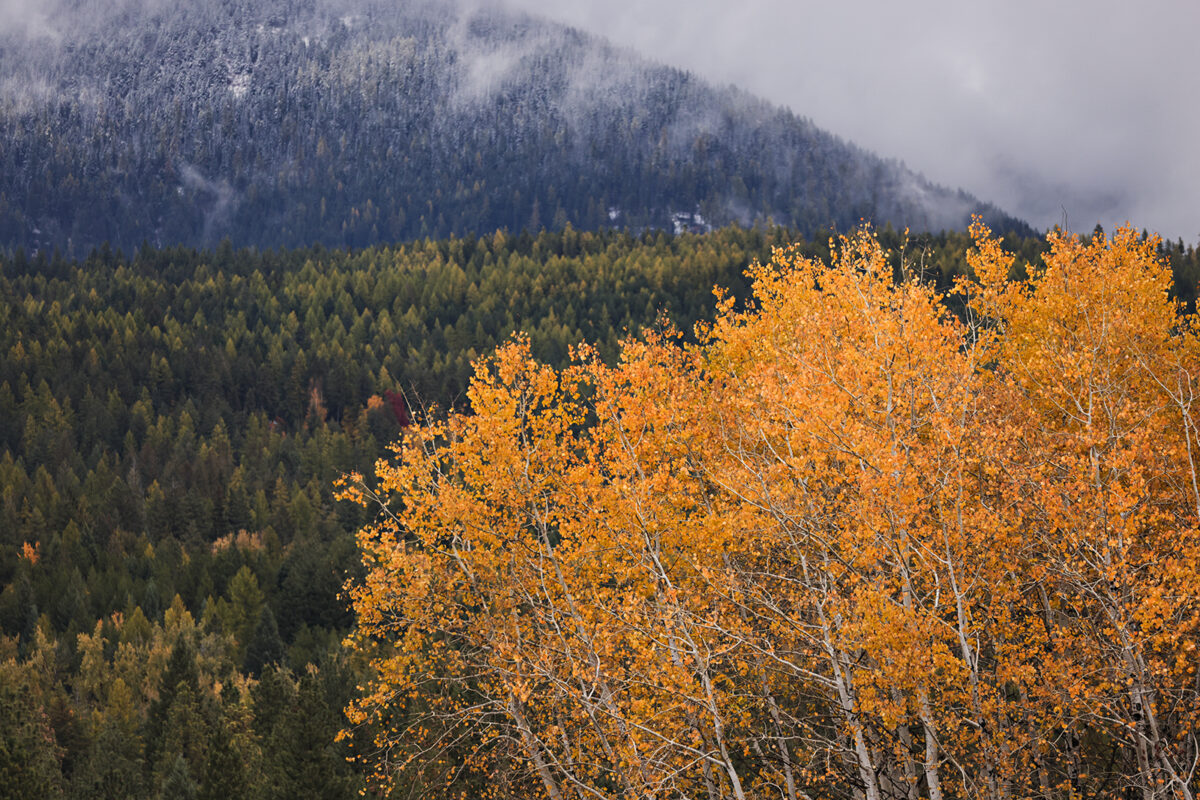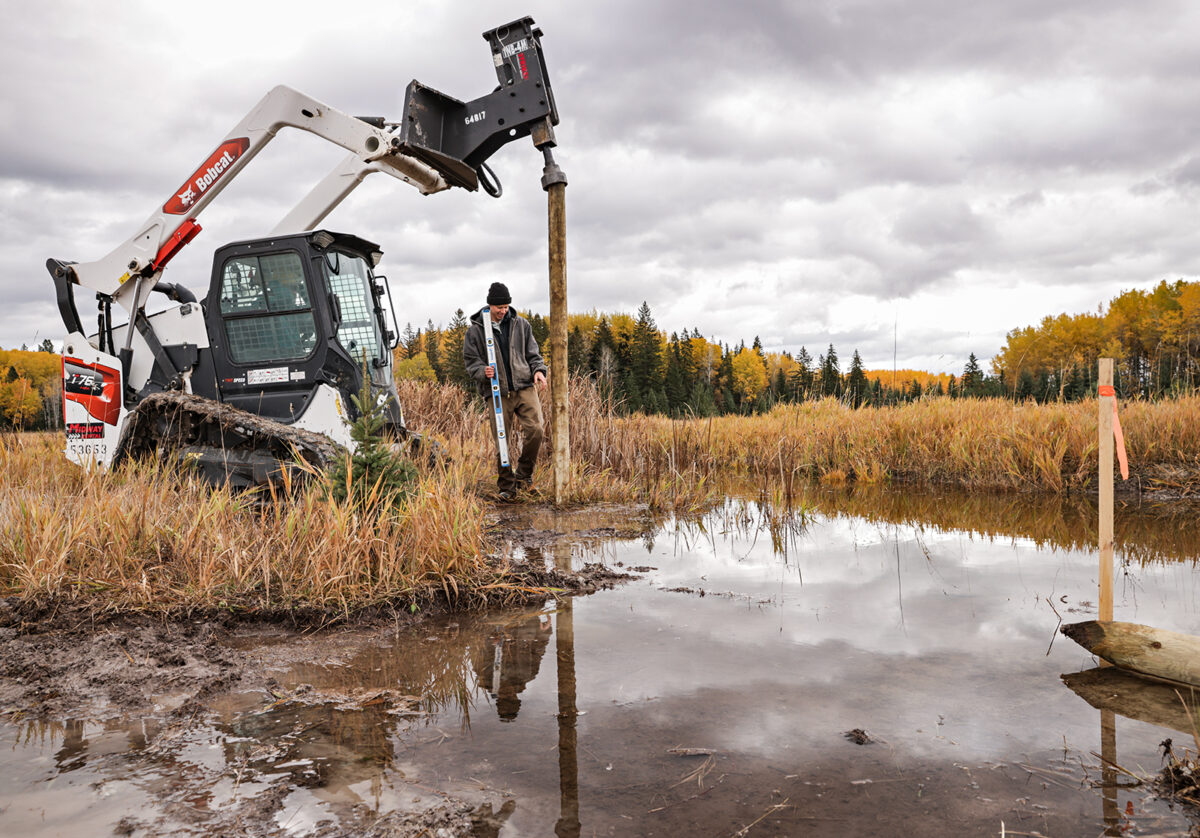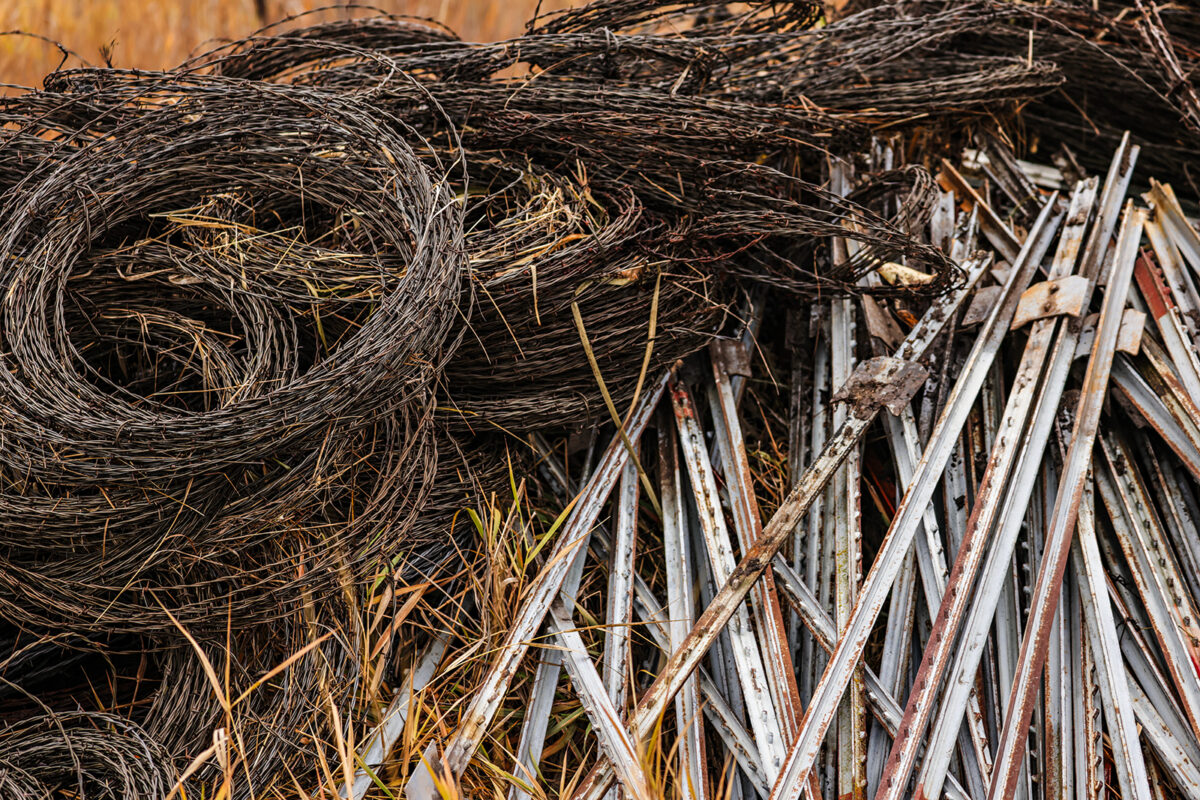The Rewilding of Whitefish’s Viking Creek
Located north of the resort community's downtown core, Viking Creek and its surrounding wetland functions as a water-cleansing "kidney" protecting Whitefish Lake. Water quality advocates say its preservation — and recent restoration — is an example of how private land stewardship can have community-wide benefits.
By Tristan Scott
To the untrained eye, Viking Creek is easy to overlook.
Hemmed in by the busy boulevard connecting downtown Whitefish to its namesake lake and ski resort, the little wetland off Wisconsin Avenue borders deluxe lodging accommodations, a private luxury golf club, municipal and residential infrastructure, and a host of growing neighborhood subdivisions. But as one of a half-dozen tributaries feeding Whitefish Lake, Viking Creek and its surrounding wetland are of utmost importance in the local ecological hierarchy.
Birdwatchers, leaf-peepers and neighbors are probably familiar with the interpretive nature trail that twines between the creek’s two branches, and water-quality watchdogs understand the wetland’s critical ecological function as a cleansing buffer, filtering sediment from the groundwater and helping shed excess nutrients before draining directly into Whitefish Lake.
And yet, thousands of powder-hounds, paved-path-promenaders, boaters and beach-goers file past the unsung ecological jewel every day without realizing the watershed exists, let alone the extent to which it’s been manipulated over the past 125 years as Whitefish evolved from an early-20th-century hub of agriculture and industry to a destination for tourism and outdoor recreation.
“Even though it’s a small stream in terms of volume, its contributions to the health of the lake and the surrounding area are really significant,” Mike Koopal, executive director of the Whitefish Lake Institute (WLI), said last week. “Viking Creek is one of Whitefish Lake’s six tributaries, and the groundwater of that area drains directly into the lake. We’ve found a high degree of biodiversity in the wetlands ranging from grizzly bears and moose, to herds of elk, to fishers and turkeys. There’s just a really wide spectrum of wildlife that use that area. And our trail cameras have recorded cow elk and calves nursing, so it’s important habitat for the Big Mountain herd.”

The WLI has owned a piece of Viking Creek wetland since Dan Averill and his family gifted a 28.82-acre parcel to the nonprofit organization in 2009. The Lodge is operated under Averill Hospitality, a family owned business that worked with WLI and a local neighborhood group, Friends of Wisconsin Avenue Wetlands, to stave off several “unfavorable development proposals” and broker a deal to offset the anticipated impacts to the wetland from an expansion at The Lodge. The deal resulted in the WLI-owned Averill’s Viking Creek Wetland Preserve, as well as publicly accessible The Living Wetlands Interpretive Trail, which Koopal describes as “a perfect way to fill your glass with nature at lunch and go back to work.”
More importantly, since it’s bordered to the north by the 211-acre Battin-Murdock Nature Conservancy Easement, the protected parcels combine to form a large contiguous cushion that protects water quality and provides habitat for aquatic, terrestrial and avian wildlife.
“It creates a buffer area with outstanding water-filtering capability, ensuring it delivers good water quality to the lake,” Koopal said. “It effectively functions as a kidney.”
But just as unhealthy eating and dehydration can harm a human kidney, an ecological kidney incurs similar damage from the cumulative effects of infrastructure projects, residential and commercial developments, traffic, and other human stressors. So, despite the decades of stewardship to save it, Viking Creek has been on an ecological-health odyssey riddled with pitfalls.
And yet, against all odds, Viking Creek is on the mend.
“If you zoom out and think about where rivers and streams and wetlands in Montana relocated, they’re in valley bottoms, and that’s where private land and development is most likely to occur,” said Leah Swartz of Montana Freshwater Partners (MFP), a Livingston-based nonprofit dedicated to conserving and restoring Montana’s wetlands and streams. Swartz is leading the restoration effort along the north and south forks of Viking Creek, which she said will help preserve the diverse wildlife habitat Koopal described, as well as rare plant communities such as spruce–skunk cabbage forested wetlands.

Formerly known as Montana Aquatic Resource Services, MFP was conceived in 2011 to fulfill a need for compensatory mitigation in Montana as required by Section 404 of the Clean Water Act. Section 404 regulates water resource projects such as dams and levees, as well as discharging, dredging or filling U.S. waters — including wetlands — for development. It also says that permits for such projects must be denied unless the permit applicant can show that steps have been taken to avoid impacts to wetlands, streams and other aquatic resources; that potential impacts have been minimized; and that compensation will be provided for all remaining unavoidable impacts.
In many cases, such compensation is meted out by federal agencies using a “mitigation bank” to sell compensatory mitigation credits, or through an in-lieu fee program to satisfy compensatory fiduciary requirements. Montana’s In-Lieu-Fee Wetland and Stream Mitigation Program, which MFP sponsors statewide with oversight from the U.S. Army Corps of Engineers (USACE), is what provided funding for the Viking Creek Wetland and Stream Restoration Project.
Through this program, unavoidable impacts to wetlands and streams — such as those associated with the Montana Department of Transportation’s Sportsman Bridge replacement project and other permitted development activities in the Flathead Valley — are offset through restoration in the same watershed.
When Ryan Richardson, a Whitefish resident who serves as the river restoration director of the environmental engineering firm NV5, heard that MFP was looking for a wetland restoration project in the Flathead Valley that fit the requisite in-lieu-fee criteria, he immediately thought of Viking Creek.
“Like a lot of restoration projects, it kind of takes a village to get it off the ground,” Richardson said. “When Leah said she was looking for projects in the Flathead that they had sold credits for, it was a matter of meeting the specific needs of those credits. I knew that the Whitefish Lake Institute had this monitoring data showing that Viking Creek contributed a really big fine-sediment supply to Whitefish Lake, and that got our heads spinning. It just occurred to me that this could be the perfect project that fits Leah’s needs and does right by the land. And that’s hard to find.”
As it happened, “hard to find” was just the right for Viking Creek.

And if the “water body keeps the score,” then the increasing pressure of growth and development along the northern tier of the Flathead Valley has made that score increasingly lopsided, according to Sharlot Battin, whose family owns the upstream property protected under a perpetual easement. It was Battin’s late mother Margaret Murdock who, in 1988, placed the family’s land under the protection of the easement with The Nature Conservancy.
So, when Battin learned of an opportunity to even the score and return the wetland hydrology of her family’s property to a more natural regime, she jumped at the chance.
“I find it somewhat ironic that someone f***ed up the environment somewhere else so they had to come up here and tweak the ecosystem and restore the balance,” Sharlot Battin, the property owner, said.
“I grew up here,” Battin, 78, said of the family property. “I’m a second generation Whitefish girl. My grandparents lived in town and my grandfather and I would come out here on the tractor and putter around. They would garden and I would hide under a tree and read a book. But my grandmother always said she wanted to preserve this property. They bought it during the Great Depression, but my grandmother always said, ‘this land is so important. We have to do something to save it.’ So, they came up with the conservation easement.”
For Swartz, encountering a private landowner like Battin, whose cooperation and willingness to accommodate stream restoration on her property, is a rare and precious opportunity.
“This is such a cool example of private land stewardship,” Swartz said. “I think Sharlot’s stewardhip should inspire other people to think about how what they can do on their own personal property can have wide-ranging benefits.”

Construction on the project began in October 2025 and is expected to be completed in Spring 2026. Key partners include Geum Environmental Consulting, Forestoration, The Nature Conservancy, and the Whitefish Lake Institute, as well as Battin,” whose stewardship of this special property made this project possible,” Swartz said.
In the days after completion of the project’s initial phase, those benefits are already coming to fruition.
On a given weekday afternoon, Viking Creek’s renovated stream channel bubbles past newly planted willow cuts, recontoured banks and stands of aspen, where LeConte’s sparrows trill and Lady’s Slipper orchids hug the soggy creek terraces. Emerging out of forested wetlands and scrub-shrub, it dribbles into an old hay field that early Whitefish settlers drained and ditched a century ago, shunting the water off site to graze their cattle.
Close your eyes and turn back the clock, and you’ll see hay fields and cattle drives that Whitefish’s early settlers, like the Baker brothers, organized along Wisconsin Avenue’s dirt corridor. Open them, and you might spy a herd of elk roaming where the infamous cattle runs once took place.

That’s the scene that made a final impression on Andrew Beltz, vice president and lead forester of Forestoration, a local environmental planning and design firm that MFP and Battin hired to perform some of the restoration work at Viking Creek.
“One of the coolest things about working on this project was that we removed about a mile of barbed wire fence that was criss-crossing this wetland,” Beltz said last week.
“After we’d finished, Leah and I stayed and hung out one evening, trying to get a few final things done. I turned off the excavator and hopped out of the machine and Leah pointed to the north, all excited,” Beltz continued. “There was this herd of elk crossing the meadow right in front of us. I counted 42 of them and they walked right through the area where we had just pulled the fence line down, uninhibited for the first time in who knows how many decades. And all of a sudden this bull elk bugled, and it was just this moment of gratitude for where we live, but also satisfaction for what we’d accomplished. Here we are, removing fencing and allowing wildlife to move freely while promoting wetland restoration right on the edge of town. It was an amazing experience.”



